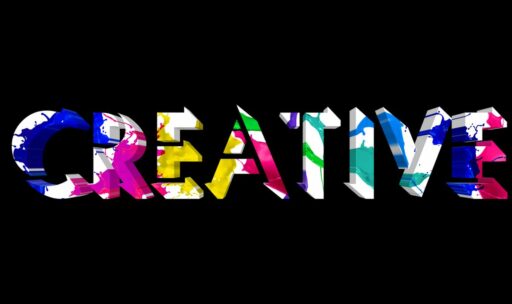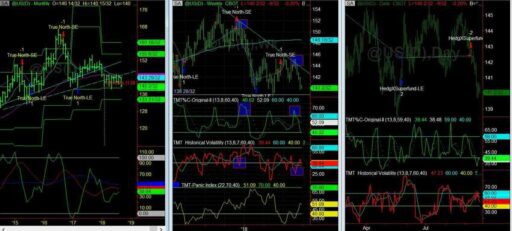In the visually-driven era of content creation, high-definition (HD) stock footage is a goldmine for filmmakers, editors, and content creators seeking to elevate their projects. ‘Maximizing Your Visuals: The Ultimate Guide to HD Stock Footage’ is designed to be your comprehensive resource, covering everything from understanding the essentials of HD footage to effectively incorporating it into your video content for maximum engagement. This guide is not only about finding the right clips but also about the nuanced art of creating a seamless visual narrative that captivates your audience.
Key Takeaways
- Grasp the critical differences between HD, Full HD, and 4K resolutions to choose the best quality for your project needs.
- Understand the significance of video file formats, codecs, and containers for optimal compatibility and quality.
- Make informed decisions between royalty-free and licensed stock footage to align with your project’s budget and legal considerations.
- Learn sourcing strategies for high-quality HD stock videos and best practices for organizing and backing up your media library.
- Discover advanced editing techniques and promotional strategies to enhance your videos and effectively engage with your audience.
Understanding HD Stock Footage Essentials


The Importance of Resolution: HD, Full HD, and 4K Explained
Understanding the different levels of video resolution is crucial for selecting the right stock footage for your project. Resolution refers to the number of pixels that compose the image on the screen, with higher resolutions offering greater detail and clarity. Here’s a quick breakdown:
- HD (High Definition) is 1280×720 pixels, often referred to as 720p.
- Full HD (FHD) is 1920×1080 pixels, commonly known as 1080p.
- 4K, also known as Ultra HD (UHD), is 3840×2160 pixels, providing four times the resolution of 1080p.
When choosing between HD, Full HD, and 4K, consider both the final platform where the video will be displayed and the storage space available. For instance, 4K footage offers the highest quality but also requires more storage and processing power.
The choice of resolution can significantly impact the visual quality of your video, so it’s important to match the resolution to the needs of your project.
Remember that while higher resolution footage can be downscaled to fit lower resolution requirements, upscaling lower resolution footage may result in a loss of quality. Therefore, it’s often best to start with the highest resolution you can manage, keeping future-proofing in mind.
Video File Formats, Codecs, and Containers: What You Need to Know
When diving into the world of HD stock footage, understanding the technical aspects of video files is crucial. Video file formats, codecs, and containers are the backbone of digital video, determining how your footage is stored, compressed, and played back. Here’s a quick rundown to help you grasp the essentials:
- File Formats: Common video file formats include MP4, AVI, WMV, and MOV. Each has its own set of features and compatibility considerations.
- Codecs: A codec compresses or decompresses video files. Popular codecs are H.264, HEVC, and ProRes.
- Containers: Containers hold together the video, audio, and metadata. Examples are MKV, AVI, and QuickTime.
Choosing the right combination of format, codec, and container can significantly impact the quality and compatibility of your stock footage across different platforms and devices.
It’s also important to note that some formats are more widely accepted than others. For instance, MP4 is commonly used for its balance of quality and file size, making it a go-to for many stock video platforms. On the other hand, AVI is known for less compression, resulting in larger file sizes but potentially higher quality. Understanding these nuances will help you select the best stock footage for your project’s needs.
Royalty-Free vs. Licensed Footage: Making the Right Choice
When it comes to incorporating stock footage into your projects, understanding the difference between Royalty-Free (RF) and Rights-Managed (RM) licenses is crucial. Royalty-Free footage allows for multiple uses across various platforms with a single purchase, making it a cost-effective and flexible option. In contrast, Rights-Managed footage offers specific usage rights tailored to your needs, which can include exclusivity but often comes at a higher cost.
Choosing the right license type for your project is essential to avoid legal issues and ensure that your content meets your distribution and budgetary requirements.
Here are some key considerations when selecting stock footage:
- Verify the scope of the license and any restrictions on use.
- Ensure that any necessary releases for trademarks, logos, or identifiable individuals are obtained.
- Adhere to the terms of use and give proper attribution if required.
- For complex usage scenarios or when in doubt, seek legal advice or permission from the copyright owner.
Remember, the license you choose will impact not only your budget but also the longevity and flexibility of your video content.
Sourcing and Selecting High-Quality Stock Videos


Top Websites for HD Stock Footage
When it comes to enhancing your video projects, the right HD stock footage can make all the difference. Finding a reliable source for high-quality video clips is crucial for filmmakers, marketers, and content creators alike. Here’s a list of top websites where you can source HD and 4K stock footage:
- Shutterstock: Offers a vast library of stock videos, including HD and 4K options, suitable for various commercial and editorial needs.
- Pond5: Known for its diverse collection of royalty-free stock footage, catering to creatives seeking unique video clips.
- Videoblocks by Storyblocks: Provides unlimited downloads with a subscription, featuring a wide range of HD and 4K videos.
- Adobe Stock: Integrates seamlessly with Adobe’s suite of editing tools, offering high-quality stock videos for professional use.
While these platforms offer extensive libraries, always review the licensing terms to ensure the footage aligns with your project’s requirements. Remember, the quality of your stock footage can elevate the production value of your video, so choose wisely to make a lasting impact.
Evaluating Video Quality: Tips for Choosing the Best Clips
When it comes to selecting the perfect HD stock footage, the devil is in the details. High-definition visuals can elevate your project, but only if they meet certain quality standards. Here are some key factors to consider:
- Resolution and clarity: Ensure the footage is true HD or higher. Look for crisp, clear images that won’t pixelate when scaled.
- Frame rate: Higher frame rates can mean smoother motion, especially important for fast-paced content.
- Color grading potential: Consider how well the footage can be adjusted to match your project’s color scheme.
- Subject and composition: The content should be relevant and well-composed, enhancing the overall narrative.
Remember, the best stock videos not only look great but also seamlessly integrate with your existing content, maintaining a consistent style and quality throughout your project.
Finally, always review the licensing agreements to ensure the footage can be used for your intended purpose. Whether you’re crafting a winning social media strategy or producing a corporate video, the right stock footage can make all the difference.
Organizing and Backing Up Your Stock Video Library
Once you’ve sourced your HD stock footage, the next critical step is to organize and back up your video library. This ensures that your assets are protected and easily retrievable for future projects. Start by categorizing your footage based on themes, projects, or any other system that suits your workflow.
Effective organization goes hand in hand with reliable backup solutions. Consider using a combination of local storage, such as hard drives, and cloud services for redundancy. Here’s a simple list to help you get started:
- Categorize your footage for easy access
- Use external hard drives for local backups
- Employ cloud storage services for additional security
- Regularly update your backup copies to reflect new additions
Remember, a well-organized video library saves time and prevents the stress of lost footage. It’s worth investing the effort upfront to avoid potential issues later on.
As you explore various storage solutions, keep an eye out for the latest trends and recommendations. For instance, the article titled ‘10 Best Video Storage Solutions for 2024‘ by Uscreen highlights the importance of comparing features, security, and pricing to make the best choice for your needs.
Incorporating Stock Footage into Your Projects


Seamlessly Blending Stock and Original Footage
Creating a cohesive video project often involves combining stock footage with original content. The key to a seamless blend is to match the visual elements such as lighting, color grading, and camera movement. Utilizing tools like blending modes can greatly enhance the integration process. For instance, in Premiere Pro, blending modes allow you to superimpose clips, creating a composite image that looks natural.
When integrating stock footage, consider the following steps:
- Assess the stock footage for style and quality compatibility with your original content.
- Use color correction and grading to harmonize the footage.
- Employ techniques like speed ramping or keyframing to match the pacing and movement.
Remember, the goal is to make the stock footage indistinguishable from your original clips, maintaining a consistent narrative flow throughout your video.
Advanced editing software provides a range of features to aid in this process, from green screen capabilities to audio synchronization. By mastering these tools, you can achieve a professional and polished final product that resonates with your audience.
Creative Ways to Use Stock Video in Your Edits
Stock footage can be a powerful tool in video editing, offering a plethora of creative possibilities. Repurposing video content is not only cost-effective but also a time-saver. By integrating stock video, editors can enhance their narrative without the need for additional shoots.
- Montages: Create dynamic sequences by combining stock clips with varying themes or moods.
- Animated Lower Thirds: Incorporate animated text overlays to introduce speakers or highlight important information.
- Speed Edits: Alter the playback speed of stock footage for dramatic or comedic effect.
Embrace the versatility of stock video to elevate your project’s aesthetic and storytelling capabilities.
Remember, the key is to blend these elements seamlessly with your original content to maintain a cohesive visual style. Employing effects like a shattering glass transition can add a unique flair to your edits, while a loading bar can be used creatively to indicate progress or time passage.
Editing Techniques for a Cohesive Visual Narrative
Creating a cohesive visual narrative requires a thoughtful approach to editing. The key is to ensure that each clip flows seamlessly into the next, maintaining the story’s rhythm and pace. Here are some techniques to achieve that:
- Storyboarding: Before you begin editing, sketch out a storyboard. This visual plan will guide your editing process, ensuring that each scene transitions smoothly and contributes to the overarching narrative.
- Consistency in Visuals: Use consistent color grading, lighting, and camera movements across all clips to maintain a uniform look and feel.
- Animated Transitions: Consider using animated transitions to connect different scenes. These can be simple or complex, but they should always serve the story.
When selecting stock footage, aim for clips that match the visual style of your original content. This will make the integration appear more natural and less jarring to the viewer.
Remember, less is often more. Avoid overcomplicating your edits with unnecessary visuals. Instead, focus on clear and simple visuals that support the message without distracting the audience.
Enhancing Your Videos with Advanced Editing Tips


Mastering Lower Thirds for Professional Results
Lower thirds are a fundamental element in video editing that can significantly enhance the viewer’s experience by providing essential information without obstructing the main content. Crafting a professional lower third requires attention to detail and an understanding of design principles.
To create effective lower thirds, consider the following steps:
- Choose a legible font that complements your video’s style.
- Keep the text concise to ensure quick readability.
- Use contrasting colors for text and background to maintain visibility.
- Animate the entry and exit of your lower thirds to add dynamism.
- Maintain consistency across all your lower thirds to establish a cohesive brand identity.
Remember, the goal of a lower third is to inform and enhance, not to distract. Striking the right balance between visibility and subtlety is key to a polished final product.
By incorporating these tips, you can elevate the professionalism of your videos, making them more engaging and informative for your audience. The use of lower thirds is not just about displaying text; it’s about integrating it seamlessly into your video to complement the storytelling.
Using Stabilization Tools to Enhance Video Quality
Shaky footage can detract from the viewer’s experience, making your content appear unprofessional. Using stabilization tools is essential for producing smooth, high-quality videos. These tools can correct unintended camera movements and enhance the overall visual appeal of your footage.
For instance, the Google Photos app offers a simple way to stabilize videos, which can be particularly useful for those on a budget. Similarly, Filmora’s stabilization feature allows you to adjust the motion level to suit your needs, providing a customizable solution to video shakiness.
When selecting a stabilization tool, consider the user interface and the level of control it offers. A tool that is both powerful and user-friendly can significantly streamline your post-production process.
Remember, stabilization is not just about fixing shaky clips; it’s about maintaining the integrity of your visual narrative. By ensuring your footage is stable, you allow your audience to focus on the content, not the camera work.
Crafting Engaging Intros and Outros with Stock Media
The first and last impressions of your video are crucial in capturing and retaining viewer attention. Using stock media effectively can make your intros and outros not only engaging but also memorable. Intros set the tone for your content, while outros provide a call to action and can lead to further viewer engagement.
To craft an engaging intro or outro, consider the following steps:
- Identify the purpose of your video and align your intro/outro accordingly.
- Choose stock footage that complements your brand and message.
- Edit the duration and transitions to ensure a smooth flow.
- Incorporate music or sound effects to enhance the emotional impact.
Remember, the goal is to create a cohesive experience that resonates with your audience. The right stock media can elevate your production value and leave a lasting impression.
When selecting stock media for your intros and outros, it’s important to keep in mind the overall narrative of your video. The stock footage should not only be high quality but also relevant to the content you are presenting. By doing so, you create a seamless viewing experience that feels professional and polished.
Maximizing Engagement with Your Video Content


Strategies for Promoting Your Videos on Social Media
In the digital age, social media platforms are indispensable tools for promoting video content. To maximize your reach, it’s crucial to start with a strong foundation. Begin by focusing on a single platform, like YouTube, to ensure quality engagement before expanding to other networks.
- Step 1: Start with YouTube to build a solid audience base.
- Step 2: Utilize scheduling tools like Hootsuite for optimal posting times.
- Step 3: Maintain consistency in publishing schedule, content type, and interaction with viewers.
- Step 4: Leverage existing communication channels, such as newsletters, to share your videos.
- Step 5: Create a sense of urgency with limited-time offers to spur action.
- Step 6: Use FOMO to entice viewers with teasers, rather than direct instructions.
Consistency is key in social media marketing. Whether it’s the frequency of posts, the nature of the content, or the platforms you choose, maintaining a predictable pattern helps in building a loyal audience. Remember, it’s not just about making long videos, but making good videos that resonate with your audience.
Building a Compelling Video Portfolio
Creating a compelling video portfolio is crucial for showcasing your skills and attracting new clients. It’s your visual resume and often the first impression you make on potential clients or employers. Here are some steps to ensure your portfolio stands out:
- Take your time to curate and organize your work. Your portfolio should be a reflection of your best work and unique style.
- Consider the target client you wish to attract and tailor your portfolio to their preferences and industry standards.
- Keep it simple and let your work speak for itself. Avoid clutter and focus on high-quality content.
- Choose the right platform, whether it’s a self-hosted website or a dedicated service, to showcase your portfolio effectively.
Remember, your video portfolio is more than just a collection of your past projects. It’s a strategic tool to generate leads and demonstrate your capabilities. Make sure it’s easily accessible and highlights your proficiency as an editor or videographer.
By following these guidelines and drawing inspiration from the best in the business, you can elevate your video portfolio to new heights. Embrace the process and let your creativity shine through each piece you select.
Leveraging Stock Footage for Effective Brand Storytelling
In the realm of digital marketing, brand storytelling is a critical component for connecting with audiences. Stock footage offers a versatile and cost-effective way to enrich your brand’s narrative. By incorporating high-quality stock videos, you can convey emotions, set the scene, and illustrate your message without the need for expensive shoots.
Stock footage can be the backbone of your video storytelling, providing a visual consistency that resonates with viewers and strengthens your brand identity.
Here are some key points to consider when using stock footage for brand storytelling:
- Be relatable: Use footage that reflects common human experiences to foster a connection with your audience.
- Be economic: Choose clips that drive your story forward, avoiding unnecessary content that can dilute your message.
- Brand Kit: Utilize tools that allow you to integrate custom fonts and logos, ensuring your videos are aligned with your brand’s visual identity.
Remember, the goal is to craft a compelling narrative that not only informs but also entertains and engages your audience. By strategically selecting and integrating stock footage, you can create a powerful marketing tool that stands out in a crowded digital landscape.
Conclusion
In the realm of digital content, the power of high-definition visuals cannot be overstated. As we’ve explored throughout this guide, HD stock footage offers a treasure trove of opportunities for creators to enhance their projects, whether it’s for marketing, education, or entertainment. By understanding the nuances of video file formats, leveraging the right tools for stabilization and editing, and tapping into vast libraries of royalty-free assets, you can elevate your visual storytelling to new heights. Remember, the key to maximizing your visuals lies in the clarity, relevance, and quality of the footage you choose. With the insights and resources shared in this guide, you’re now equipped to make informed decisions that will captivate your audience and leave a lasting impression. So go forth and create with confidence, knowing that the perfect shot is just a click away.
Frequently Asked Questions
What is the difference between HD, Full HD, and 4K resolutions?
HD resolution is 1280×720 pixels, Full HD is 1920×1080 pixels, and 4K, also known as Ultra HD, is 3840×2160 pixels. The higher the resolution, the more detailed the image quality.
How do video file formats, codecs, and containers affect my stock footage?
Video file formats and codecs determine how video data is compressed and decompressed. Containers hold video, audio, and metadata files together. Choosing the right combination ensures compatibility and quality.
Should I choose royalty-free or licensed stock footage?
Royalty-free footage can be used without paying royalties, but often comes with restrictions. Licensed footage requires payment for each use, but may offer exclusivity and specific usage rights.
How can I ensure I’m selecting high-quality HD stock footage?
Evaluate the footage’s resolution, frame rate, bit rate, and color depth. Also, check for noise, artifacts, and whether the content fits your project’s aesthetic and technical requirements.
What are some creative ways to use stock video in my projects?
Stock video can be used for b-roll, establishing shots, backgrounds, or to illustrate concepts. It can also be manipulated with effects to fit your project’s theme or to create unique visuals.
How can I use stock footage to enhance my brand storytelling?
Stock footage can add visual interest and context to your brand’s narrative. It can fill gaps in your original footage, provide consistency across media, and help convey your message effectively.





